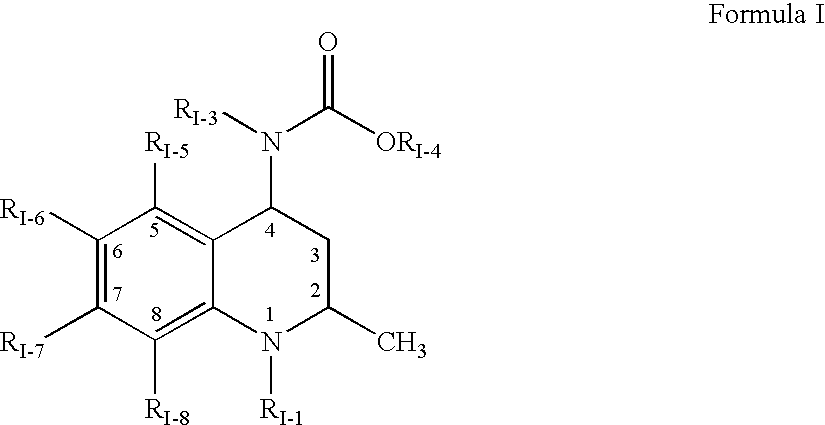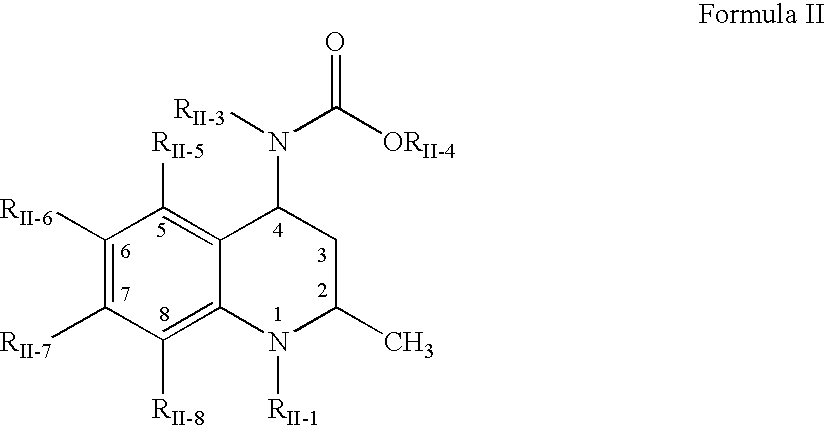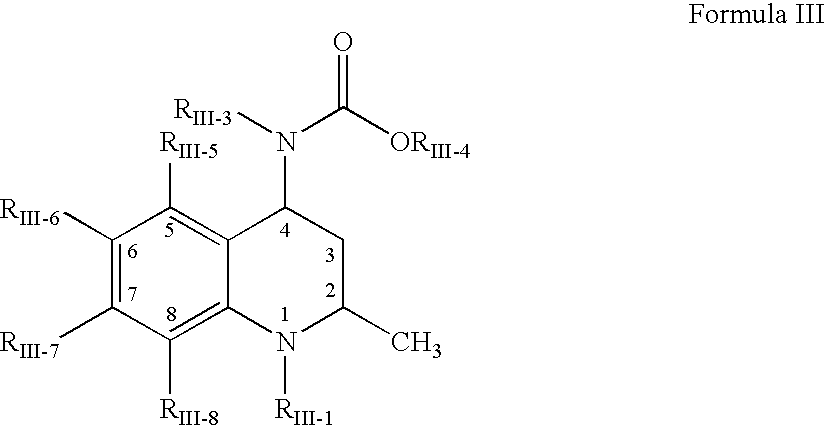Pharmaceutical Compositions of Adsorbates of Amorphous Drug
a technology of amorphous drugs and pharmaceutical compositions, which is applied in the direction of inorganic non-active ingredients, immunodeficiency disorders, and metabolism disorders, etc., can solve the problems of poor bioavailability or irregular absorption of low-solubility drugs, short-lived improvement concentration, and amorphous forms of drugs may dissolve more rapidly, so as to improve drug stability
- Summary
- Abstract
- Description
- Claims
- Application Information
AI Technical Summary
Benefits of technology
Problems solved by technology
Method used
Image
Examples
example 1
[1194]A drug / substrate adsorbate comprising quinoxaline-2-carboxylic acid [4(R)-carbamoyl-1(S)-3-fluorobenzyl)-2(S),7-dihydroxy-7-methyl-octyl]amide (“Drug 1”) and zinc oxide (the substrate) was prepared as follows. Drug 1 (0.15 wt %) was dissolved in a suspension of zinc oxide (NanoTek®, 30 to 60 nm, surface area of 15 to 45 m2 / gm, 1.33 wt %) in methanol (a solvent for Drug 1) to form a milky suspension. This suspension was pumped into a “mini” spray-drying apparatus via a syringe pump at a rate of 1.3 mL / min. A high frequency vibrational device (Whisper 700-Sound Natural) was attached to the syringe to maintain a homogeneous suspension while the adsorbate was being formed. The spray solution was metered using a Cole Parmer 74900 series rate-controlling syringe pump. The solution was pumped into a Spraying Systems Co. two-fluid nozzle, model number SU1A, with nitrogen as the atomizing gas. The nitrogen was pressurized and heated to a temperature of 100° C. at a flow rate of about 1...
example 2
[1196]The drug / substrate adsorbate of Example 1 and the crystalline drug of Control 1A were evaluated in an in vitro dissolution test using a microcentrifuge method. In this test, 18 mg of the adsorbate of Example 1, or 1.8 mg of Control 1A, was added to a microcentrifuge tube. The tubes were placed in a 37° C. temperature-controlled chamber, and 1.8 mL phosphate buffered saline (PBS) at pH 6.5 and 290 mOsm / kg was added. The solutions were quickly mixed using a vortex mixer for about 60 seconds, and then centrifuged at 13,000 G at 37° C. for 1 minute. The resulting supernatant solution was then sampled and diluted 1:5 (by volume) with methanol. Diluted samples were analyzed by high-performance liquid chromatography (HPLC) at a UV absorbance of 245 nm using a Phenomenex Kromasil C4 column and a mobile phase of 45% (0.2% H3PO4) / 55% acetonitrile. After sampling, the contents of the tubes were mixed on the vortex mixer and allowed to stand undisturbed at 37° C. until the next sample was...
example 3
[1197]The stability of Example 1 adsorbate was evaluated in an accelerated storage test. The adsorbate was stored under elevated temperature and humidity conditions to increase the rate of physical changes occurring in the material in order to simulate a longer storage interval in a typical storage environment. Samples of the adsorbate and Control 1B were stored at 40° C. / 75% relative humidity (RH). Samples were analyzed using a powder X-ray diffraction (PXRD) technique using a Bruker AXS D8 Advance diffractometer as follows. The X-ray tube (KCu, 1.54184 Å) was operated at a voltage of 45 kV and a current of 40 mA with the beam focused through a Göbel mirror and a series of slits into a line focus. Diffractograms were typically collected over the 2□ range of 4° to 40° with a step size of 0.02° / step. Data were collected for a minimum time of 2.4 sec / step. Scans were obtained by holding the tube at a constant angle (to keep the illuminated area of the sample constant) and scanning a s...
PUM
| Property | Measurement | Unit |
|---|---|---|
| pH | aaaaa | aaaaa |
| solubility | aaaaa | aaaaa |
| wt % | aaaaa | aaaaa |
Abstract
Description
Claims
Application Information
 Login to View More
Login to View More - R&D
- Intellectual Property
- Life Sciences
- Materials
- Tech Scout
- Unparalleled Data Quality
- Higher Quality Content
- 60% Fewer Hallucinations
Browse by: Latest US Patents, China's latest patents, Technical Efficacy Thesaurus, Application Domain, Technology Topic, Popular Technical Reports.
© 2025 PatSnap. All rights reserved.Legal|Privacy policy|Modern Slavery Act Transparency Statement|Sitemap|About US| Contact US: help@patsnap.com



